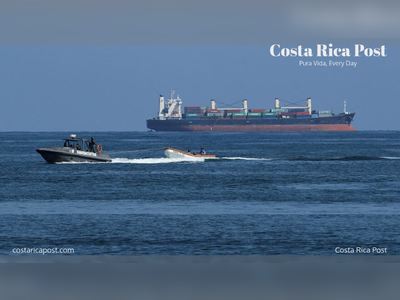Costa Rica's Critical Battle: Rescuing Strategic Regions from Narco Influence
OIJ Director Flags Urgency in Drake and Cuajiniquil Amid Drug Trafficking Exploits
In a decisive move to combat the persistent grip of drug traffickers, Costa Rica’s Judicial Investigation Organization (OIJ) has spotlighted Drake in the southern region and Cuajiniquil in the north as critical zones in need of immediate rescue.
OIJ Director Randall Zúñiga emphasized the strategic importance of these areas for narcotics operations, urging proactive efforts to reclaim them from criminal enterprises.
Historically, Drake served as a coastal stronghold with a Coast Guard delegation in place.
However, a temporary removal of this outpost by the Security Ministry, under the direction of Minister Mario Zamora and Vice Minister Manuel Jiménez Steller, has raised alarms within law enforcement circles.
The vacuum in formal oversight risks turning this picturesque yet vulnerable locality into a narco-haven.
'We are lobbying for additional resources from the Legislative Assembly to establish a regional OIJ office in Drake,' Zúñiga stated.
'Our objective is to provide steadfast containment to prevent networking of illicit groups.' Despite the temporary absence of the Coast Guard, Zamora asserts that Drake is not left unguarded.
'A Public Force delegation currently performs territorial patrols across Drake, supplemented by uninterrupted marine surveillance from bases in Golfito and Quepos,' he reassured.
Meanwhile, Cuajiniquil presents as a border transit route, shuttling freight towards Nicaragua.
Astonishingly, despite being a pivotal corridor, Zúñiga notes that no more than a kilogram of narcotics has been intercepted there over the past five years–a statistic that underscores the formidable challenge posed by the sophisticated trafficking networks.
Costa Rican authorities remain resolved, brandishing an experienced cadre ready to engage with the nuanced operational landscape in these regions.
The escalating focus on both Drake and Cuajiniquil signals a broader strategy to shield the nation’s peripheries from becoming entrenched in the narcotic trade.
This renewed focus is emblematic of a robust national effort to uphold Costa Rica’s stability.
The stakes remain high, as the success of these interventions could serve as a template for securing other at-risk territories unassumingly positioned in the shadows of Central America’s narco corridor.
OIJ Director Randall Zúñiga emphasized the strategic importance of these areas for narcotics operations, urging proactive efforts to reclaim them from criminal enterprises.
Historically, Drake served as a coastal stronghold with a Coast Guard delegation in place.
However, a temporary removal of this outpost by the Security Ministry, under the direction of Minister Mario Zamora and Vice Minister Manuel Jiménez Steller, has raised alarms within law enforcement circles.
The vacuum in formal oversight risks turning this picturesque yet vulnerable locality into a narco-haven.
'We are lobbying for additional resources from the Legislative Assembly to establish a regional OIJ office in Drake,' Zúñiga stated.
'Our objective is to provide steadfast containment to prevent networking of illicit groups.' Despite the temporary absence of the Coast Guard, Zamora asserts that Drake is not left unguarded.
'A Public Force delegation currently performs territorial patrols across Drake, supplemented by uninterrupted marine surveillance from bases in Golfito and Quepos,' he reassured.
Meanwhile, Cuajiniquil presents as a border transit route, shuttling freight towards Nicaragua.
Astonishingly, despite being a pivotal corridor, Zúñiga notes that no more than a kilogram of narcotics has been intercepted there over the past five years–a statistic that underscores the formidable challenge posed by the sophisticated trafficking networks.
Costa Rican authorities remain resolved, brandishing an experienced cadre ready to engage with the nuanced operational landscape in these regions.
The escalating focus on both Drake and Cuajiniquil signals a broader strategy to shield the nation’s peripheries from becoming entrenched in the narcotic trade.
This renewed focus is emblematic of a robust national effort to uphold Costa Rica’s stability.
The stakes remain high, as the success of these interventions could serve as a template for securing other at-risk territories unassumingly positioned in the shadows of Central America’s narco corridor.








